Rethinking the affordable housing crisis in the Mohawk Valley with historic preservation
New York state leaders recently reached a deal on a new legislative framework addressing the national affordable housing crisis.
The agreement included enticements for tenants, labor unions, and developers: eviction protections, higher wages for workers, as well as tax breaks for construction. Together, the measures were an attempt to tackle the state’s housing shortage by making it easier to build.
Gov. Kathy Hochul released a statement deeming it a “landmark deal” she's “very proud of.”
According to Oneida County officials, rent in the Mohawk Valley has increased over the past five years; locals are spending nearly 35-percent of their annual income on housing.
Furthermore, records indicate that regional homelessness cases – those applying for temporary housing assistance/emergency shelter – have increased 350-percent since 2020.
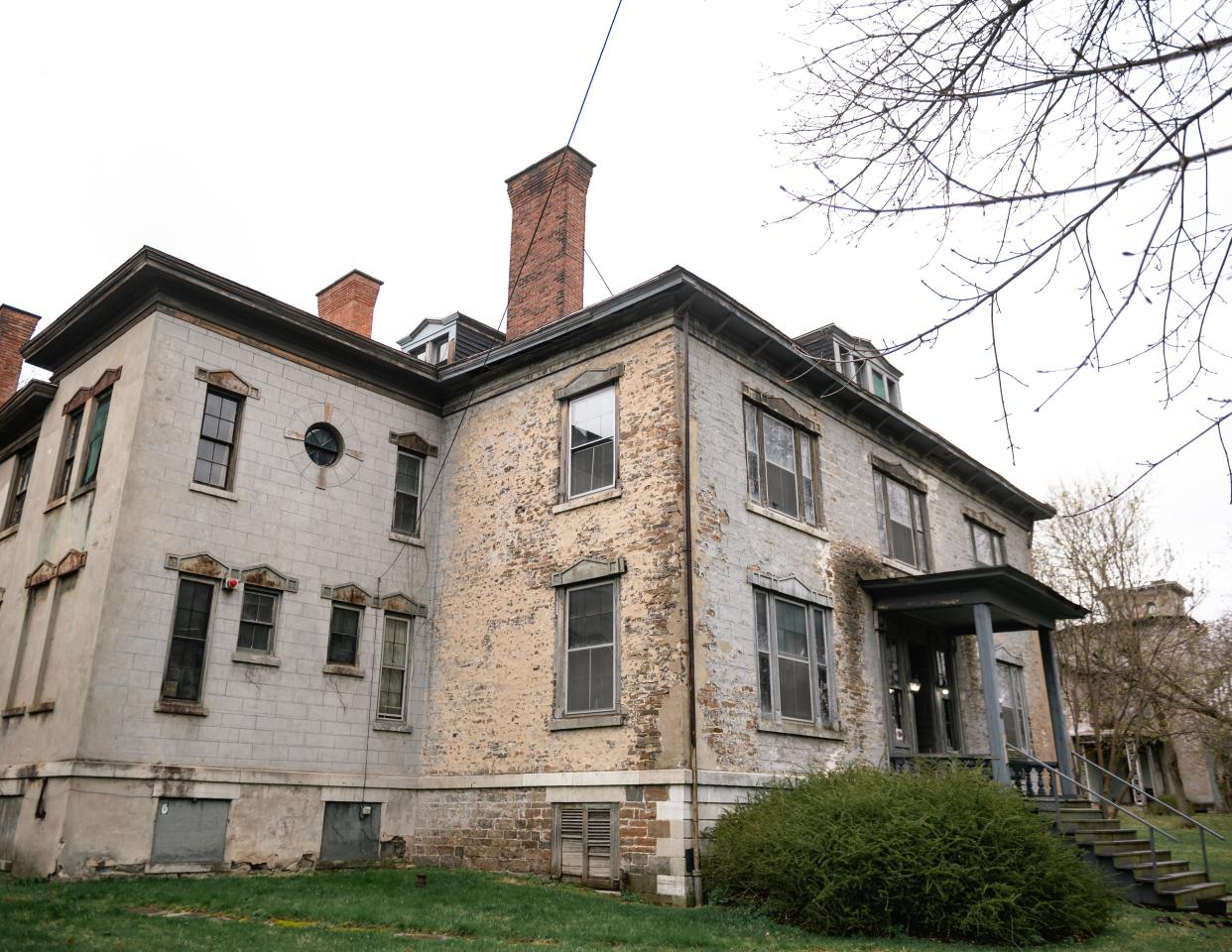
As the county completes its 2024 Comprehensive Housing Inventory Assessment and Strategy, an attempt to lay out a path to meet the needs of the future, a new tool has proven effective: historical preservation.
Landmark Society of Greater Utica
For 50 years, the Landmarks Society of Greater Utica has been the premiere organization in the region, promoting the preservation, restoration, and reuse of historic buildings, neighborhoods, and landscapes.
Members – Treasurer, Dianne Nassar and Vice President, Michael Bosak – discussed future plans on a private site tour with the Observer-Dispatch.
Bosak framed historic preservation as a solution to ongoing housing issues. He noted its far less expensive to fix-up existing buildings than it is to build new ones, “especially with the current cost of labor and materials.”
“The infrastructure (roads, water, sewer, electric, and cable lines) already exists” continued Bosak. “It’s just practical. Plus, it's considered greener to preserve existing buildings than to build from scratch. That’s not to say the existing housing stock doesn't come with its own set of challenges (such as lead-based paint and asbestos). Careful work practices help minimize the potential risks.”
Nassar agreed, acknowledging the dated housing stock in Utica is set in "well-established neighborhoods." They exude their own special charm, she said.
“We’re hopeful that the next generation continues the tradition of preservation,” added Nassar. "At present we have 400 active volunteers. And, fortunately we’ve found that younger couples are enamored with the details, character, and beauty of the older homes on the market.”
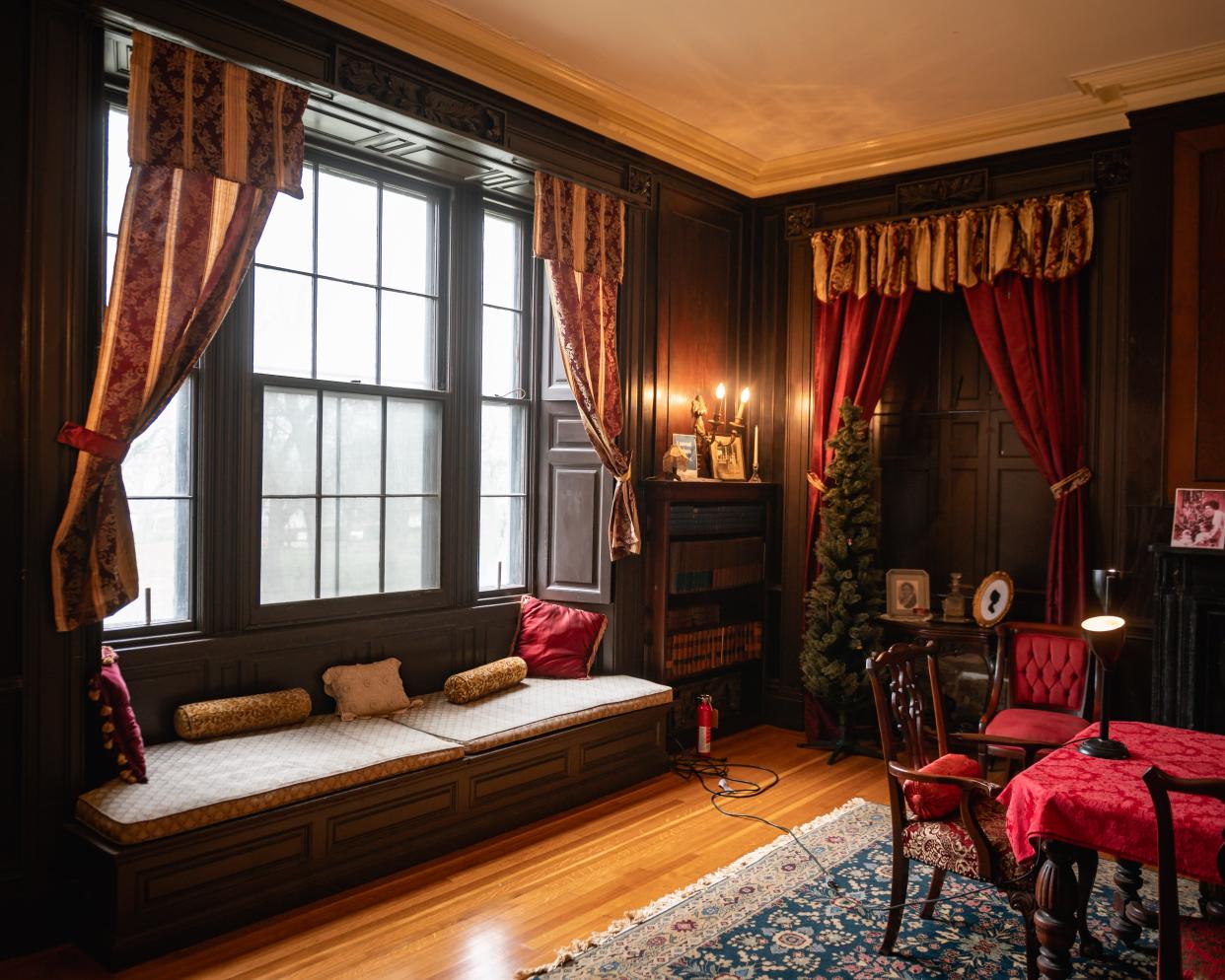
Rutger mansion tour
To start the tour, Bosak traced the history of the Rutger Mansion.
In 1820 Jude Morris Millar laid the foundation and the front masonry wall. When he passed away his family hired architect Philip Hooker to complete the construction.
Over time, the building was sold to a variety of individuals such as Utica Mayor Thomas Walker and U.S. Senator Roscoe Conkling.
“Conkling was a key figure during the Grant administration, when the Republican Party first formed,” underscored Bosak. “When he died, there was a speech held on the front porch. Thousands showed up for the oration.”
In 2008 the Landmarks Society bought the three buildings; the first investment the non profit organization had made. Supposedly, then President Mike Rizzo had lived across the street and felt troubled by the decline of the property.
“A couple owned all three buildings,” explained Bosak. “One was used as a nursing home, the other as a fraternity house. This mansion was their private residence. Eventually the frat house fell into disrepair and had to be taken down.”
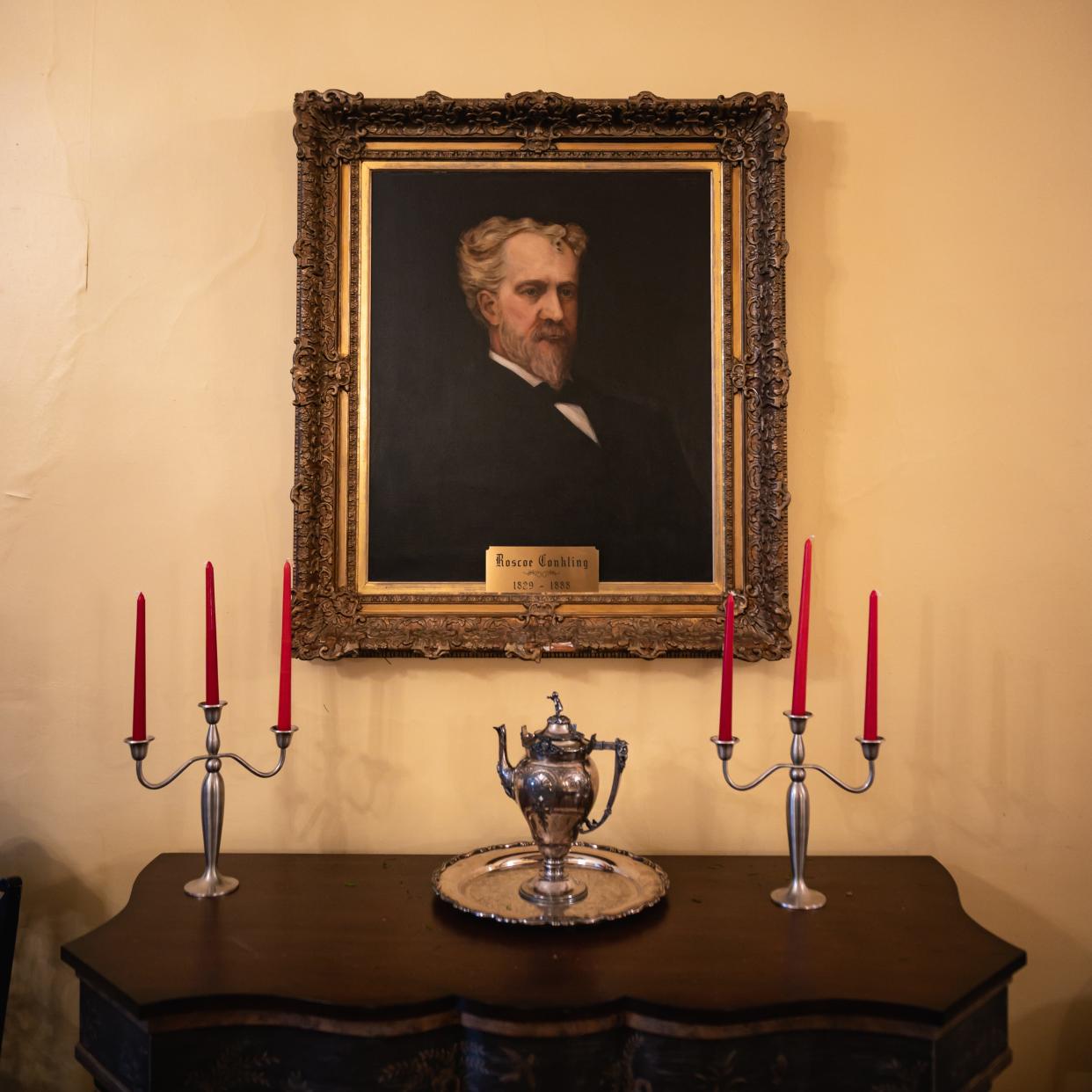
Bosak went on to claim the residential mansion as the “most historic house in the county."
Not only is it listed on the national registry but it’s also a National Historic Landmark. The only other of which is the Old Main building on Court Street.
“The dining room has original Zuber wallpaper, ” Bosak gleamed. “Which is super rare– scarce amounts today are found in the White House. The print, tropical zones, dates back to the 1790s. It was all hand blocked so it can’t be replaced but is can be preserved.”
Today the building wears many hats as the Landmark society’s headquarters, a house museum, and an event center (commonly used for wedding receptions). Tomorrow it might try on a few more, hinted Bosak.
“After addressing porch stability issues we plan to turn our attention upstairs,” said Nassar. “We’re hoping to renovate the top floors and convert it into a space used for AirBnB’s or affordable apartments.”
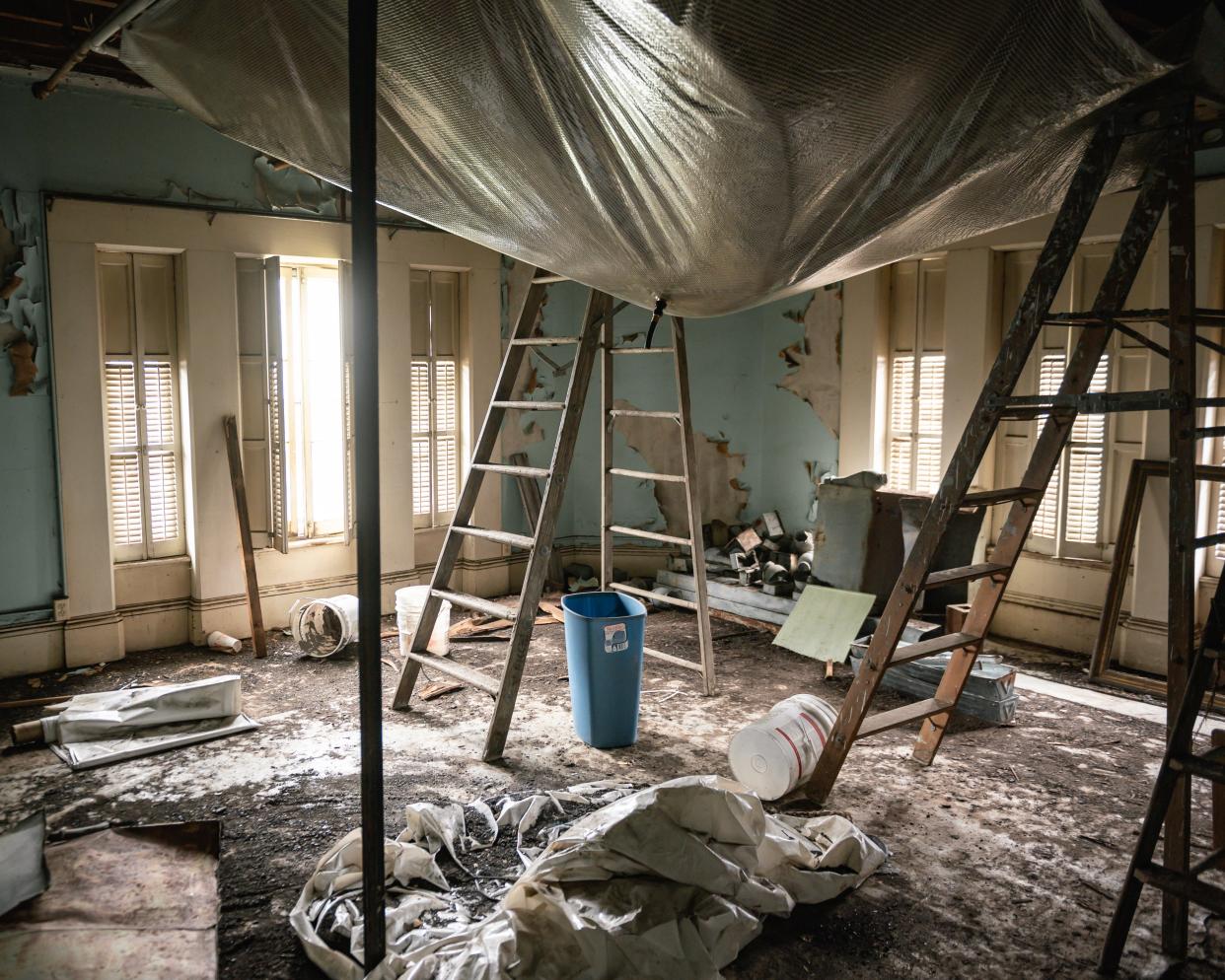
'A tool for combatting the affordable housing crisis'
One might think for a city the size of Utica there’d be a lot of potential housing stock.
Nassar clarified that’s not the case.
“Back in the 1970’s we lost a ton of buildings,” recalled Nassar. “As a lifelong resident of Utica, I look at the Loft apartments we have today and remember the naysayers who doubted that people would choose to live in a repurposed building. Now those units are hard to get because they’re so popular.”
As stated by Nassar, with rent up nearly 49- percent it makes sense to use what we have in our wheelhouse.
With pressures for future development in the area Bosak emphasized it's imperative the Landmarks’ mission – to preserve history and protect the future – endures so there can be a balance between the existing built environment and new plans.
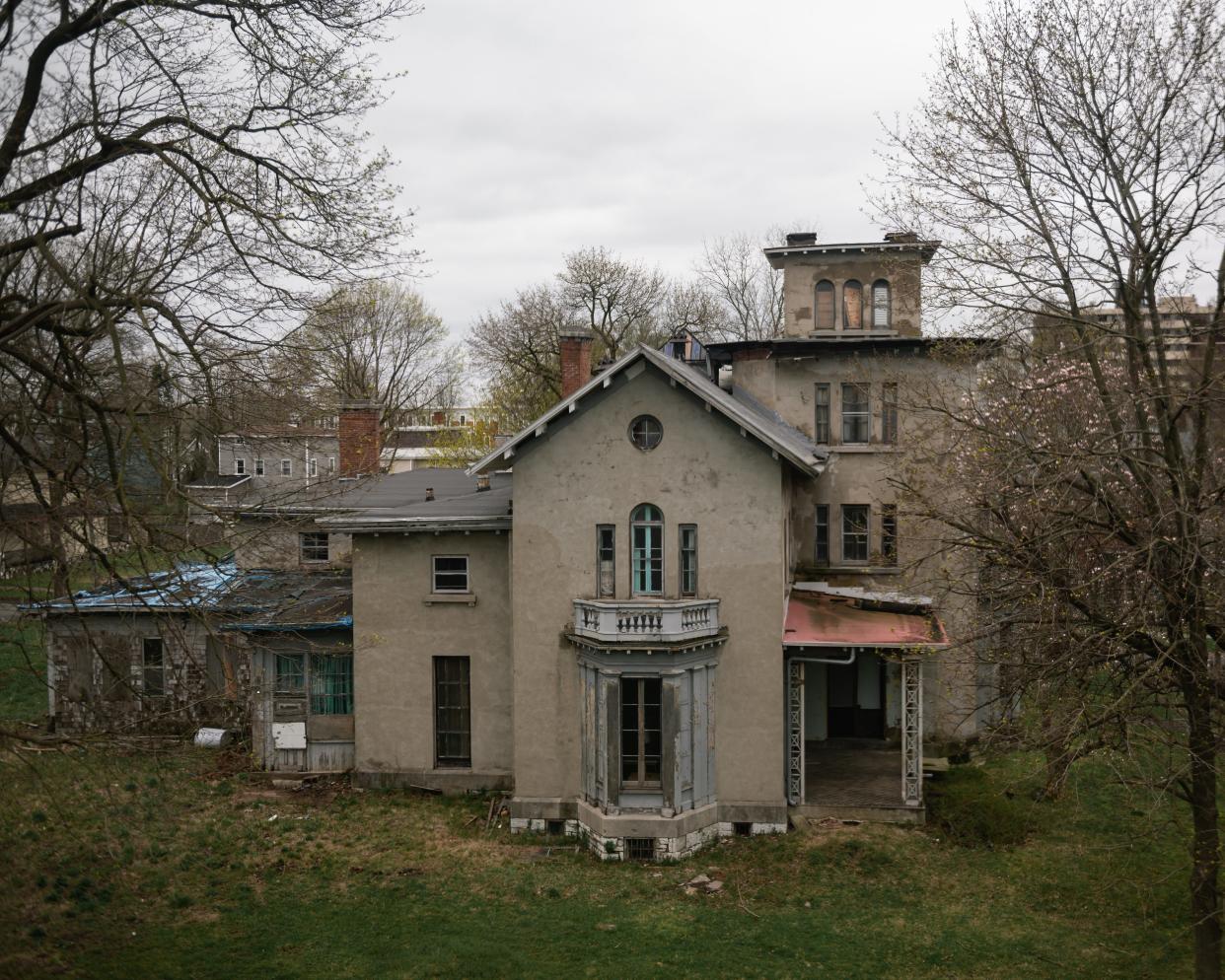
Summer walks, historical happy hours
The Rutger Mansion will be open for the public to tour on June 25.
In fact, every Monday night during the summer, June to August, the Landmark Society holds free walk and talk tours where a historian dives into site history and facilitates conversation, Bosak highlighted.
According to Nassar, it's become such a beloved tradition the board recently decided to extend it through the winter as well: historical happy hours.
The last cocktail party of the season will be held April 25 at the Hage Building on Genesee Street.
“That site is an example of sustainable preservation,” said Nassar. “Another solution to modern problems."
Utica's first green building
James Hage, founding attorney of Hage & Hage Law, bought his first historic building across from the Oneida County courthouse on Charlotte Street in Utica. He later purchased the surrounding lot and redeveloped his first site.
In 1972, the Landmark Society gave Hage an award for his "honorable" renovations.
“Years went by and I watched this building on the corner of South and Genesee street go unoccupied,” Hage recalled. “It used to be the Homestead Savings and Loan Bank. As a young lawyer used to attend real estate closings there.”
Hage remembered watching the building deteriorate as it stood vacant for six years. At the time (2005) he’d just sold his company, Independent Wireless One, to Spring P.C.S and had been looking for another site to invest in.
“With a 25-foot ceiling everyone suggested I add different floors to create leasable apartments,” said Hage. “Absolutely not. I used to write for an architecture magazine in graduate school. I knew I had a responsibility to preserve the atrium. The problem? Finding a way to deal with high utility costs.”
Hage admitted he didn’t have an initial commitment to green energy; he said he stumbled into the idea of geothermal heating and solar energy as a caveat to his financial predicament.
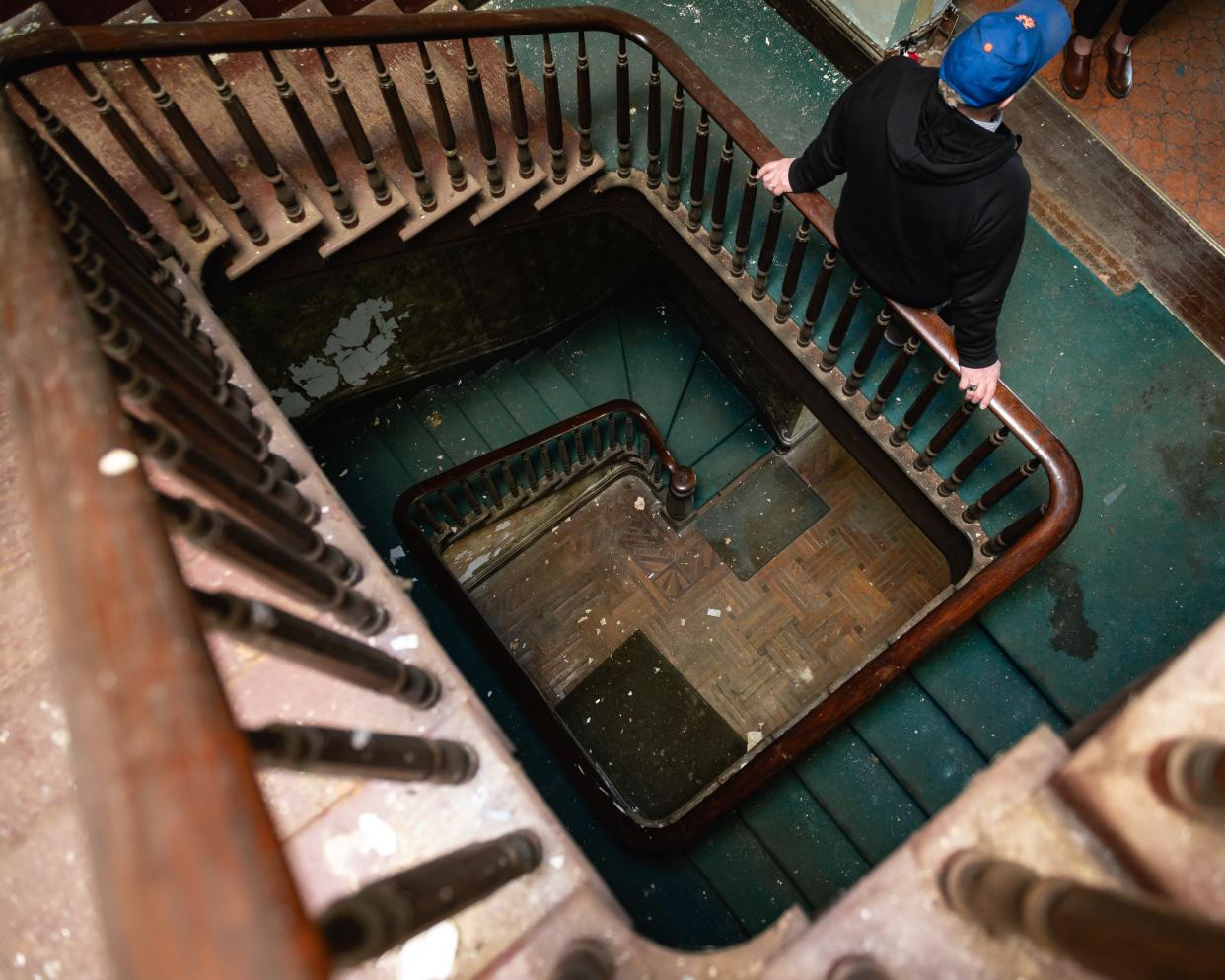
LEED certification
In 2006 Hage reached out to the New York State Energy Research and Development Authority (NYSERDA). He shared that their reaction was one of shock; a green building hadn't been built in the city before.
Laughing, Hage referred to the project as a "Lewis and Clark-type expedition."
“None of the engineers or contractors had worked on a green project– let alone a LEED certified one,” said Hage. “We learned as we went. Luckily the adjacent parking was the ideal location for buying 25 geothermal wells, 440 feet deep each.”
LEED-certified buildings focus on occupant well-being. The rating system focuses on strategies like banning smoking and reducing toxic exposure from materials to improve air quality.
The certification process mandates the submission of thorough documentation to demonstrate compliance with standards in: site sustainability, water efficiency, energy consumption, greenhouse gas emissions, materials, and natural resources.
“The regulations were over 1,000 pages,” Hage emphasized. “The requirements are stringent, down to details like the kind of glue used in the furniture we bought. We hired Amy Dunst from Harden Furniture in Connellsville PA. She refurbishing the entire interior. ”
Sustainable historic preservation
According to Hage, it's much more difficult to renovate a building sustainably then it is to build one.
He outlined how the green temperature system works.
“We circulate our water with food-grade glycol.” explained Hage. “Its almost like a closed radiator system in a car. Since the ground below the earth is a constant 55 degrees geothermal heat takes advantage of that. In the winter the system pulls from warmth from the earth; in the summer it takes heat from the air and releasing it into the earth."
Given the orientation of the site it also relies on solar harvesting; its floors absorb sunlight during the day and radiate energy at night.
When asked whether or not Hage has seen a return on investment he answered with a resounding yes.
“Remarkably so,” emphasized Hage. “The transition to renewable sourcing has greatly improved the economics of the building. I was hoping to be a Johnny Appleseed of sorts, spreading this idea throughout the community. I have to tell you, it's been a success for me but I've failed to onboard others.”
Enter a new green community
Despite many awards and congratulations received, Hage said he was most proud of his partnership with the Johnson Park Center (JPC).
After taking Reverend Maria Scates on a tour of his green building in 2007 he mentioned that every JPC building built/renovated since has also been LEED certified.
“We’ve working on a collaborative project in Utica now,” added Hage. “62 units of affordable housing and a green community center. I expect it to be done by the end of the year.”
The Johnson Park Green Community apartments are a $28 million development located in the Cornhill neighborhood.
Designed to meet Passive House standards and NYSERDA's Buildings of Excellence program criteria, the apartments utilize energy-efficient features, including a solar photovoltaic system capable of meeting a significant portion of the development's energy demand, with a goal of net-zero emissions.
In line with passive house standards, each building features an Energy Recovery Ventilation system; the temperature from the exhaust air will pretreat the incoming air. The project is anticipated to achieve a minimum of LEED Gold, state officials said.
"Johnson Park Green Community Apartments will provide affordable, energy-efficient homes and a new hub for the community that builds upon our ongoing investments in Utica," said Governor Hochul in a statement. "These investments in the city, including through the $10 million Downtown Revitalization Initiative, are helping strengthen Utica's neighborhoods and provide our most vulnerable residents with the housing options they need to thrive."
Nassar and Bosak both felt Hage's work with sustainable historic preservation was worth spotlighting. They said it showcased how national issues, such as the climate crisis and the affordable housing crisis, can be treated at a grassroots level.
This article originally appeared on Observer-Dispatch: New York housing: Addressing future needs through preservation
